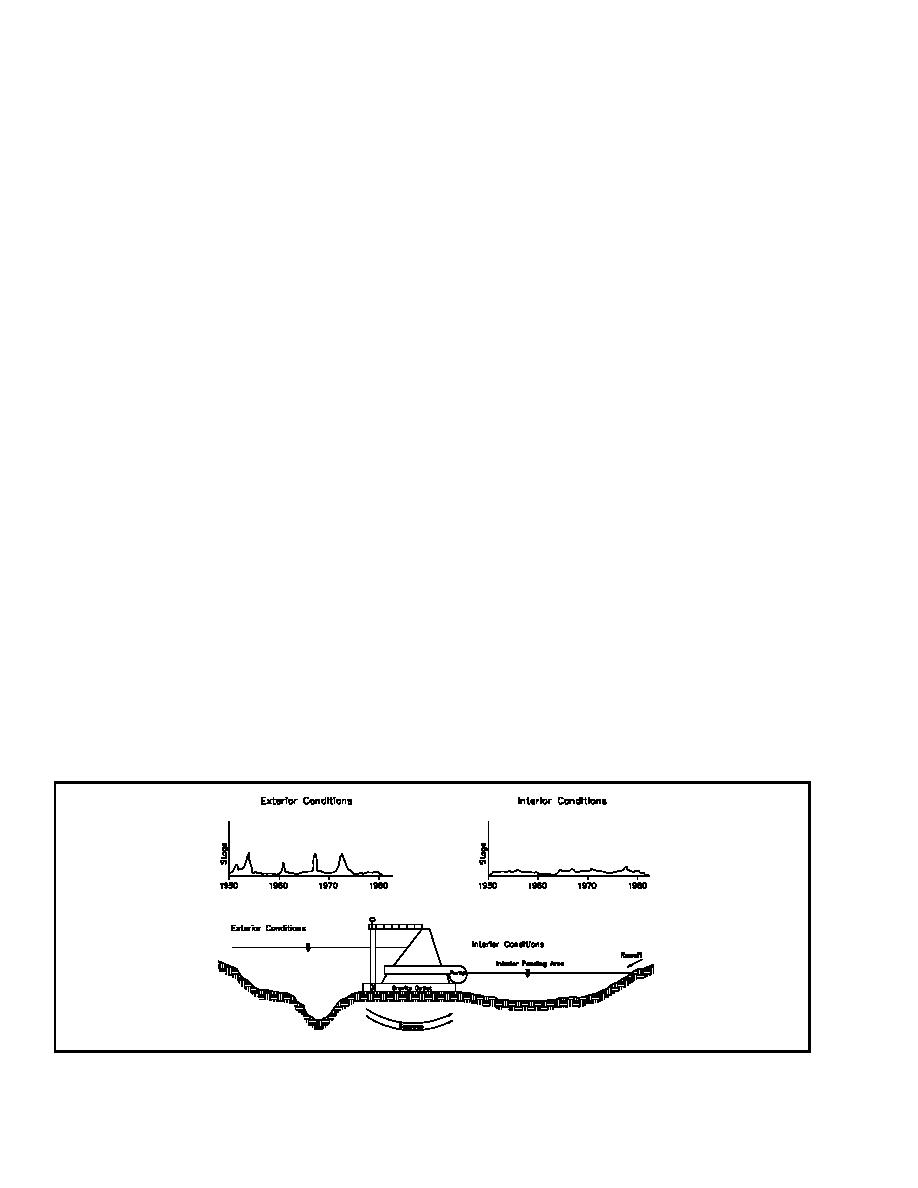
ETL 1110-2-367
31 Mar 95
model calibration/validation and system performance are
sponsor, and the general public. Most importantly, the issue of
normally required. The methods used depend largely on the
coincidence of flooding is addressed inherently in the analysis.
study type and setting, resources availability, nature of flooding,
The analysis is particularly relevant for evaluating agricultural
available information, and a host of other factors. Most studies
damage.
require combinations of both approaches.
(b) Two major considerations in continuous simulation
a. Continuous simulation analysis (CSA) concepts. Con-
application are the length-of-record and the amount of data
required for the analysis. The record of data may be
tinuous simulation methods involve analysis of continuous
unrepresentative (records are often too short), resulting in an
records of hydrologic events. The procedure consists of
inappropriate size and mix of measures and operation
performing sequential hydrologic simulation of inflow, outflow,
specifications of the system. Continuous simulation procedures
and change in storage to derive interior water surface elevation
require a significant amount of information and possibly
hydrographs given exterior stages and interior runoff and/or
extensive calibration and extrapolation.
seepage for the entire period-of-record. Figure 2-1 presents a
general summary of the concepts involved in the continuous
b. Hypothetical event analysis (HEA) concepts. HEA
simulation method.
uses single historic or synthetic events to develop frequency-
(1) CSA overview.
Continuous precipitation data
based estimates of flow and/or stage.
(normally historic rainfall gaged records) are developed for each
subbasin. Subbasin loss rates are subtracted and the runoff is
(1) Hypothetical analysis for dependent events. This
transformed to the outlet. Base flow is added to yield continuous
procedure is applicable when interior and exterior floods are
runoff hydrographs. Hydrographs are combined and routed
dependent for the same meteorologic events. A single series of
through the system to the line-of-protection to yield inflows for
storm events is assumed to occur over both the interior and
the interior ponding area. These data are used with exterior
exterior areas. A constant exterior stage, "blocked" or
stage data and the characteristics of gravity outlet and pumping
"unblocked" exterior conditions may be evaluated using a series
stations at the line-of-protection to simulate the operation of the
of hypothetical storm events on the interior area to evaluate the
system. The results are continuous stage hydrographs at the
two bounds. These conditions represent total coincidence and
interior ponding area. Subsequently, interior stage-frequency
noncoincidence, respectively. Figure 2-2 graphically depicts the
relationships can be derived.
concepts for dependent events. Event precipitation data,
subbasin loss rates, and runoff transforms are used to compute
(2)
CSA applicability and limitations.
the runoff hydrograph. Base flow is added to yield the total
subbasin hydrograph at the outlet. This is called the unit
(a) Continuous simulation is attractive because it
hydrograph procedure and it is described in detail in EM 1110-
preserves the seasonality, persistence, and coincidence or
2-1417. Hydrographs are combined and routed through the
noncoincidence of exterior river stages and interior flooding.
system to yield an inflow hydrograph for the interior area. These
The method enables project performance to be displayed. It is
data are used with exterior stage data for the same flood event
easily understood by the other study participants, the local
to simulate the expected operation of the system. Exterior
Figure 2-1. Continuous simulation analysis concepts
2-4



 Previous Page
Previous Page
